|
Meadowbank Farm,
a Grade II*
listed building, is
a clay
cruck house in the village of
Curthwaite in Cumbria,
northwest England, dating to
at least the 16th century.
Ian Laval, a native Cumbrian,
bought it in a neglected
state in 1970 and started a
furniture-making workshop
there. He restored the house
to its 17th century format over
the next 25 years, using
traditional materials and
processes in consultation
with English Heritage
architects.
He felled and sawed local
oak for replacement roof
timbers and internal joinery,
including 15 oak multi-
paned windows, 9 doors, a
staircase and floors.
Eleven tons of water reed were
imported from Hungary for
the new thatched roof -- the
remains of old wheat straw
thatch was covered by
corrugated iron in 1916.
All internal plaster and
external render was made
from lime slaked on site in the traditional way, using burnt
limestone, with cow tail
hair and cow manure added
according to old methods.
These lime recipes were
essential to the long-term
survival of the old house.
All of the woodwork, and all
of the furniture in the house
was made by Ian Laval from
timber grown within a few
miles of Curthwaite.
He sold the house in
1999 at the start of another
venture.
Meadowbank Farm was
notably occupied in the
17th century by the family
of John Losh, a farmer whose descendants remained in
the house for at least a century.
A 1666 date-stone over the
front door bears the initials of
John and his wife, Dorothy.
John Losh's will, dated 1692,
is in the local historical
archives. According to the
manor court books, now in
the archives at Carlisle,
the Loshes paid two shillings
and four-pence half-penny a
year annual rent to the lord
of the manor.
The Loshes had six children.
Losh family births, marriages
and deaths during the family's
stay at Curthwaite (known then
as Kirkthwaite) are recorded in
the Westward manor court
books and parish registers.
The restoration work at
Meadowbank Farm was
grant-aided by English Heritage.
Meadowbank Farm and the
restoration work carried out by
Ian Laval features in "Clay
Dabbins -- Vernacular Buildings
of
the Solway Plain", an
extensive academic study by
Nina Jennings published in
2003 by the Cumberland and
Westmorland Antiquarian and Archaeological Society.
Ian Laval sold Meadowbank
Farm in 1999 to go to British
Columbia, western Canada,
to begin a 15,000
nautical mile
voyage back to his native Cumberland in the 30ft sailing
boat Lydia B via Panama and
the Atlantic. He arrived at
Maryport, Cumbria, in July
2003. There is an illustrated
account of the voyage.
Ian Laval returned to British Columbia and
continues to make furniture there.
Ian Laval, furnituremaker
ian@ianlaval.com The
voyage of Lydia B |

Meadowbank Farm restored.

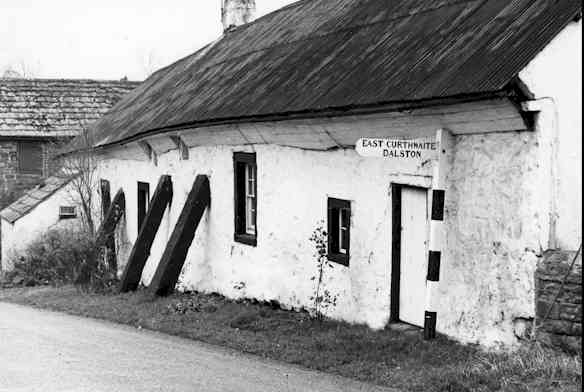
Before restoration
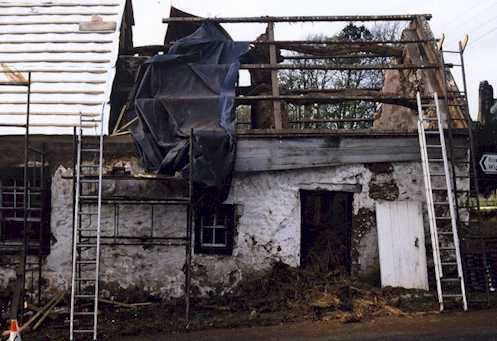
Restoration in progress
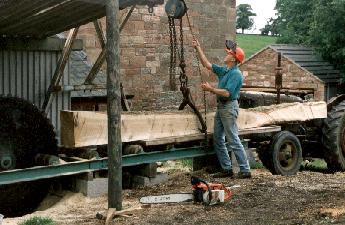
Ian Laval saws oak for the house.
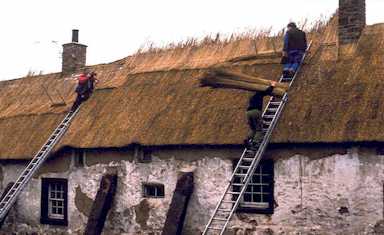
Thatching in progress.
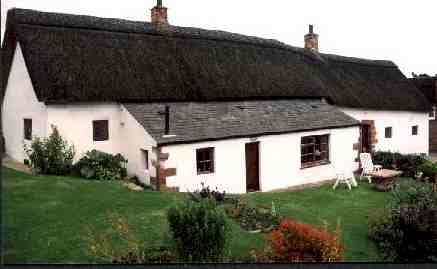
Rear of the restored house.

...and before restoration
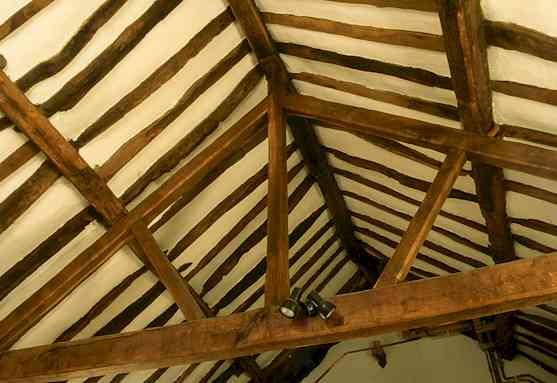
Roof of the integral barn with new oak
truss built with timber
from a local tree.
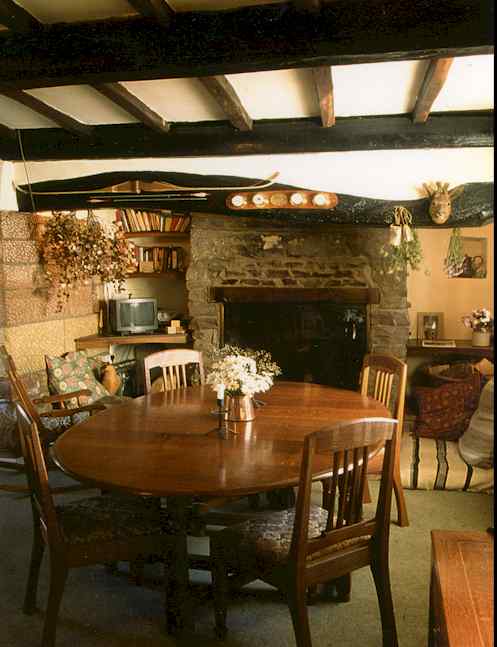
Central living-room & inglenook
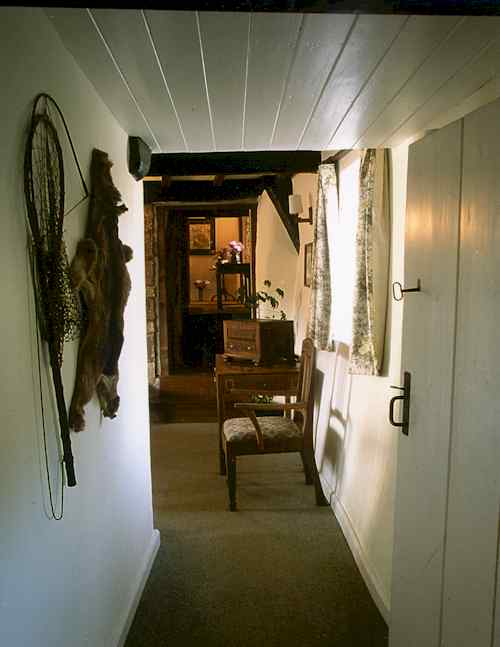
The heck
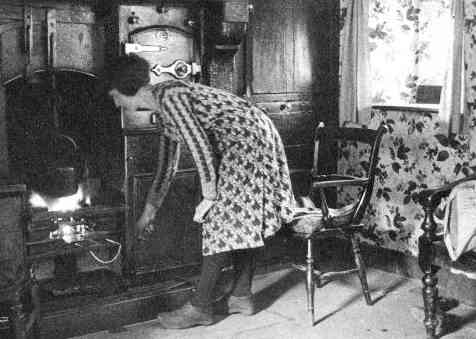
Living-room in the 1930's
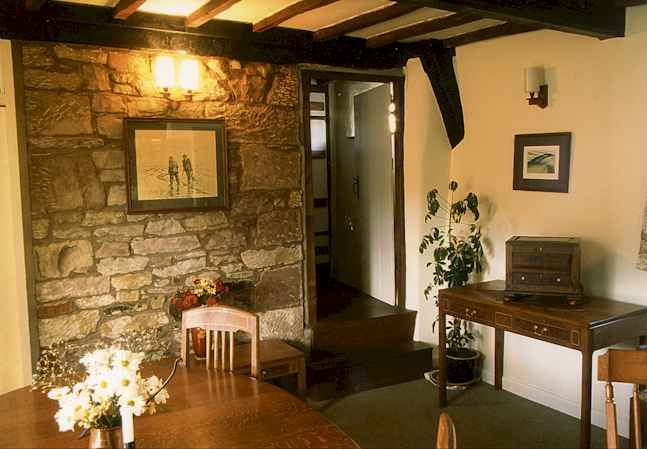
Living-room & cruck
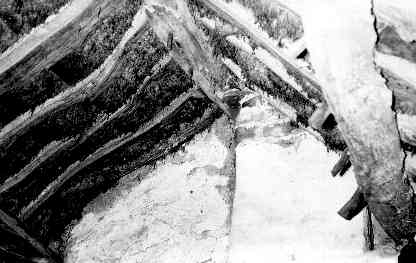
Before: Inside the ancient roof, showing turf and
riven oak
spars.
After: The same room as an upper-floor bedroom.

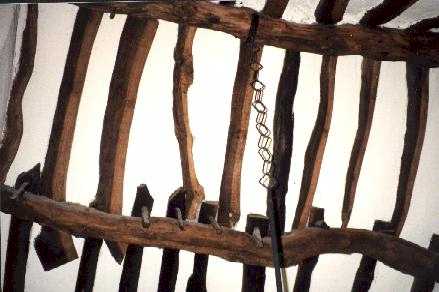
Cleft oak half-rafters hung over purlins
and ridge.
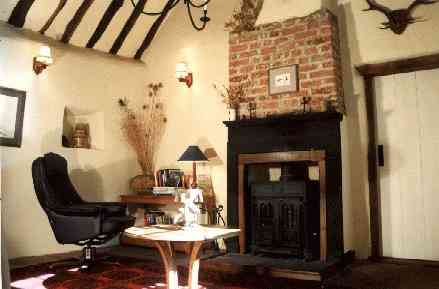
The parlour.
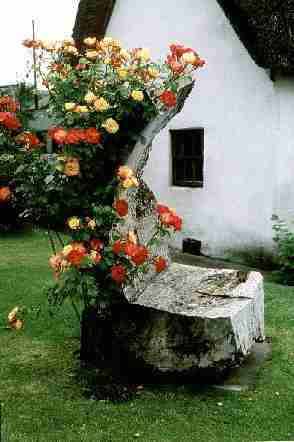
Roses and tree-seat.
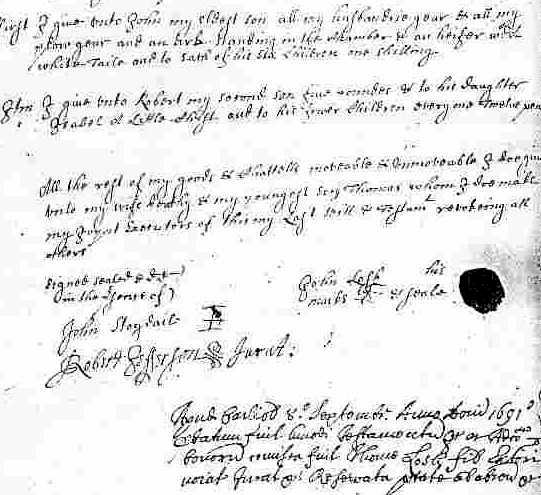
The will of John Losh, dated 1692. "First
I give unto John
my eldest son all my husbandrie gear and all my
plow gear
and an ark (chest) standing in the chamber
and an heifer with
whyte tail and to each of his six children
one shilling......."

|

















